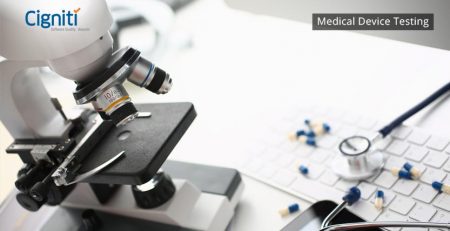10 Testing Recommendations for Software as Medical Device
Medical devices have been used for centuries but are only being regulated recently to ensure patient safety. Every medical device must meet the requirements of the regulations in a country or region before entering the market. Very recently, going digital has changed not only our lifestyles but also the operations of medical devices. In such cases, not only the devices themselves need to meet the requirements but also the software used to diagnose or drive a clinical decision and considered a medical device.
Software as Medical Device
Software as Medical Device (SaMD), generally referred to as SaMD, was classified by the International Medical Device Regulators Forum (IMDRF) in which the Food and Drug Administration (FDA) and European Union (EU) are part of stakeholders along with several other countries. IMDRF defined SaMD as “software intended to be used for one or more medical purposes that perform these purposes without being part of a hardware medical device.” It is vital to pay attention to the phrase “without being part of,” which implies that the software itself functions independently of any existing medical device.
Some examples of SaMDs are as follows:
- Software to regulate any installed medical device in a patient, like a pacemaker.
- Software to display the images of medical imaging devices like MRI on mobile devices.
- A sleep monitoring app on a smartphone uses a camera/microphone/smartwatch to transmit the collected data to the sleep lab.
- Software that analyzes available patient data for a healthcare provider to develop a plan of action or to make a clinical decision.
A SaMD can often attain its intended medical purpose independent of the hardware counterpart. The software does not meet the definition of IMDRF if its intended purpose is to drive a hardware medical device and the software used to power hardware or drive a hardware device; this is known as Software in a Medical Device (SiMD).
10 Types of Testing for SaMD
Now that we know what a SaMD is, let’s see what types of testing are required. Below are ten key testing recommendations for SaMD to ensure its safety, effectiveness, and reliability.
- Functional Testing: Focuses on verifying the functionality of the SaMD, involving testing individual software components, modules, or features to ensure they work as intended. Functional testing may include unit testing, integration testing, and system testing.
- Usability Testing: To assess how easy and intuitive the SaMD is to use for its intended users, like gathering user feedback through user interviews, observations, and surveys. Usability testing helps identify design flaws, user interface issues, and areas for improvement in user experience.
- Performance Testing: To evaluate the performance and scalability of the SaMD by measuring its response time, resource usage, and stability under different workload conditions. Performance testing ensures the software can handle the expected user load and provide a satisfactory user experience.
- Security Testing: Aims to identify vulnerabilities and weaknesses in the SaMD’s security mechanisms by testing for potential security breaches, data breaches, unauthorized access, and other security risks. Security testing helps ensure that the SaMD protects patient data and complies with current security standards.
- Compatibility Testing: Verify that the SaMD can work seamlessly with different platforms, operating systems, devices, and software configurations, ensuring that the SaMD can function correctly and deliver accurate results across various environments.
- Validation Testing: To confirm that the SaMD meets the specified requirements and intended use by testing the software against established acceptance criteria, protocols, and standards.
- Regulatory Compliance Testing: SaMD must comply with regulatory requirements and standards specific to the medical device industry. Regulatory compliance testing validates that the software meets the necessary regulatory guidelines, such as those set by the U.S. Food and Drug Administration (FDA) or the European Union Medical Device Regulation (EUMDR).
- Interoperability Testing: If the SaMD needs to integrate with other medical devices or EHRs, interoperability testing ensures that the software can effectively communicate and exchange data with these external systems. This involves testing data exchange formats, protocols, and compatibility with interoperability standards.
- Software Verification and Validation: This comprehensive testing process involves verifying that the software is designed and implemented correctly (verification) and that it meets the user’s needs and intended use (validation).
- Risk Management and Safety Testing: SaMD undergoes risk management activities, including hazard analysis and risk assessment, to identify and mitigate potential risks. Safety testing ensures that the SaMD operates safely and minimizes potential patient harm.
It’s important to note that the testing requirements for SaMD can vary depending on regulatory guidelines, intended use, risk classification, and other factors. The testing process should align with the applicable standards and industry best practices.
Conclusion
In recent times, where the digital world is expanding exponentially, SaMDs are also expected to ensure the safety of patients and provide the intended performance. As more devices are integrated to meet the needs of the current era, the emergence of more SaMDs and regulations to ensure their safety is expected to evolve. SaMDs significantly raise the requirement for quality engineering/assurance to ensure that the performance is as expected and that no harm is done directly or indirectly to the patient.
Software testing is a familiar ground for Cigniti, and we offer solutions with a strong emphasis on regulations, compliance, quality, and more.
Need help? Consult our Medical Device Testing experts to learn more about the best recommendations for Software as Medical Device.





Leave a Reply